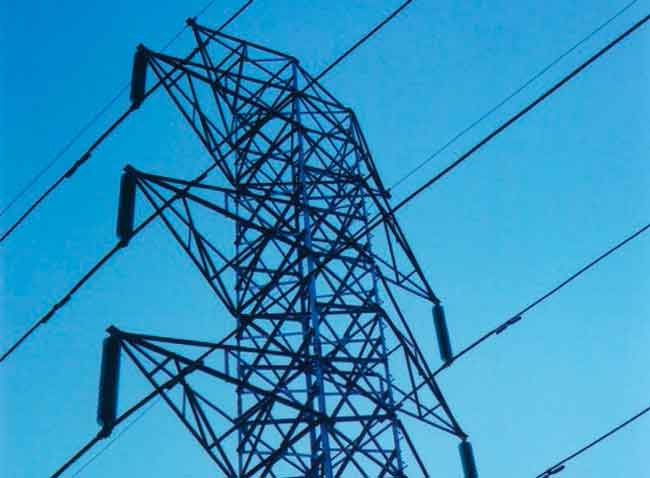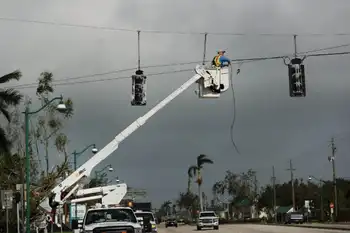In Canada, plug-in cars have familiar feel
By CNET News
CSA Z462 Arc Flash Training - Electrical Safety Essentials
Our customized live online or in‑person group training can be delivered to your staff at your location.

- Live Online
- 6 hours Instructor-led
- Group Training Available
The bulk of production plug-in electric vehicles available now are either utility trucks, small cars that top out at 25 miles per hour, or the pricey Tesla Roadster sports car. Now automakers are building plug-in sedans and SUVs with lithium ion batteries designed for the mass market.
Judging from the cars I've driven, automakers are trying to strike a balance between enticing consumers with new technology but not asking them to make sacrifices. So even though electrification is shaking up the auto industry, the biggest learning curve for owners may be around fueling rather than driving. And if the goal is to make plug-ins mainstream, that's probably a good thing.
Consider the electric Ford Focus which is due out in 2011. It runs entirely on batteries for a range of about 100 miles and will be manufactured side-by-side with the gasoline edition.
During my drive two weeks ago, I was eager to feel the acceleration. Vehicles that run off electric motors have "instant torque," which means you get the car's top acceleration at all speeds. The Focus was indeed zippy and responsive, but when I asked if it was better than the gasoline Focus, Ford's director of global electrification Nancy Gioia told me that it'd be the same — on purpose.
Ford dialed back the potential acceleration of the electric Focus so drivers can expect the same from the gasoline and electric versions. The same is true for braking.
"That makes the technology less scary and more familiar — and, actually, safer. Because if you jump from an (electric car) to a regular car, you don't want to have to remember very different (conditions)," she said. Limiting the maximum available acceleration also saves the batteries to help deliver on expected range.
Another car in the all-electric category is the Think City, made by Think of Norway, which I got a chance to drive recently. From a design point of view, it's almost the polar opposite of the high-end Tesla Roadster. The Think City can go about 100 miles on its batteries and it's highway capable with a top speed of 60 miles per hour. In its first iteration, it only has two seats in the front and a hatchback.
Once again, I found the acceleration pretty good and responsive during my quick loop around a parking lot roof. But don't expect sports car-caliber handling. It struck me as a car simply designed to get you from one place to the next, but on electric charge. The company expects to start selling the Think City in Europe later this year and build a plant for the U.S. market next year.
Nissan, Tesla Motors, and Coda Automotive are among the other automakers betting on all-electric sedans. The thinking is that the limited range is acceptable for people who would rather fuel up on electricity than oil for their daily commutes. GM executives, for example, project that more than 90 percent of drivers could do 90 percent of their driving in electric mode.
If you drive 50 miles a day, all-electric cars probably aren't the best fit for your primary car. That said, a 100-mile range with daily charging can meet a lot of Americans' daily driving needs and rental cars are always available for long road trips.
Auto industry executives say it will be substantially cheaper to drive on an electric charge, but the high cost of batteries and power electronics raise the upfront cost. Ford's electric Focus, for example, will cost more than the gasoline version, although it should be eligible for a tax credit for plug-ins. The Chevy Volt is said to cost about $40,000, and Nissan's Leaf is said to cost in the $25,000 to $35,000 range, although the company is looking at options, such as battery leasing, to lower that upfront cost.
Analysts project electrics to be a very small slice of the overall market for hybrids and electric vehicles in the next five years because of the limitations on range and the anticipated higher cost associated with the new technology.
Sales of hybrids, meanwhile, are projected to grow. But what remains to be seen is how much traction plug-in hybrids will get. Toyota, Ford, and General Motors are preparing plug-in hybrids, which will start arriving in showrooms over the next two or three years. Initially, plug-in hybrids are being tested with fleet operators.
After taking the Focus for a ride, I took a spin in a prototype of a plug-in hybrid Ford Escape SUV being tested by utilities gauging the impact of plug-ins on the grid. The driving, again, was familiar; acceleration, handling, and the interior is all what I'd expect in an SUV. What was different is that I was quickly drawn to the fuel-efficiency feedback system.
In this case, the Escape drives mostly on its 10 kilowatt-hour battery (compared to a 1.5 kilowatt-hour battery in a regular hybrid) for the first 30 miles or so. But when you need an extra boost of power, the gasoline engine will kick in, which you can hear and see on the in-car display.
The big advantage of gas-electric vehicles, of course, is that you can fuel up away from an electrical socket. Overall, fuel economy will improve the more often you can charge up. In a test of its fleet of converted plug-in Priuses, Idaho National Labs found that its average mileage was 55 miles per gallon, but fuel economy dropped significantly if cars were not charged every day.
The technological twist on the plug-in hybrids is the extended-range electric vehicle or a series hybrid — an approach being used by the Chevy Volt and Fisker Automotive luxury sedans. In this case, it's the electric motor that moves the car all the time and the gas engine is used to run a generator for the motor. When I was taken for a drive in the Volt by a GM auto engineer this summer, I found the Volt had a lot of pep and handled turns well.
Having driven a number of plug-in vehicle variants over the past year, it's clear that these cars will work just fine for everyday driving. The technology of lithium ion batteries leaves plenty of room for both utilitarian and performance cars. Nobody can say how much more the average consumer will be willing to pay for fuel efficiency from the new technology, but the biggest change to daily habits may come when drivers fuel up by plugging in rather than filling 'er up.











